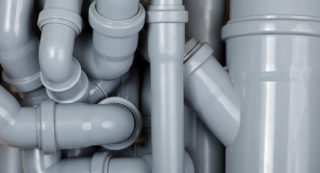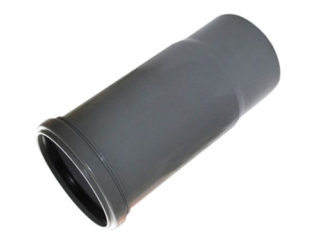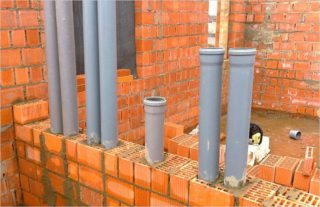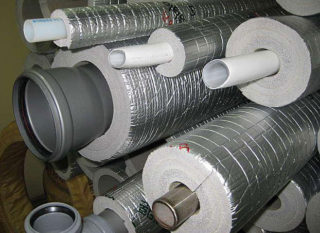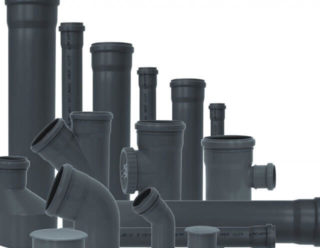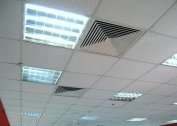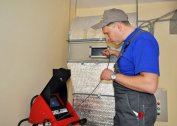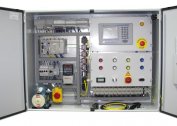The option of ventilation from sewer pipes in a private house is characterized by low cost and ease of installation. You can assemble such a system yourself. It is affordable and effective. This option has both advantages and disadvantages.
Possibility of using sewer pipes for ventilation
Sewer pipes differ in strength, degree of safety for the environment and human health. First of all, you need to choose the right components of the future system. Mostly PVC pipes are used. The tightness of the pipeline is ensured by rubber seals. Installation is simple, special tools are not required. Elements are inserted into each other. Due to the variety of fittings, a ventilation system of any configuration can be assembled from sewer pipes.
Some experts believe that only hoods can be mounted from such elements. Sewer pipes are not suitable for the supply air duct, because plastic releases toxic substances into the air. However, the products are accompanied by safety certificates, therefore, it is impossible to unequivocally state a significant concentration of these substances in air when using fan pipes as ventilation pipes.
The inner surface of the ducts accumulates static electricity, so dust and dirt particles adhere to it. If antistatic treatment is carried out, this can be prevented. In any case, all of the above does not exclude the possibility of installing a ventilation system.
The following features of natural ventilation from plastic pipes are noted:
- Air is supplied through open doors and windows, vents, ventilation valves, slots due to the difference in pressure and temperature.
- Part of the ventilation duct, which is located in cold rooms, such as in the attic, as well as on the roof, must be insulated so that condensation does not form.
- If you install the fan on the hood, the quality and intensity of air exchange will improve.
- Exhaust openings are placed in rooms where unpleasant odors are formed: in the kitchen, in the toilet, in the bathroom.
- The exit of the ventilation duct to the street is protected from precipitation and wind - a deflector is installed.
An extractor from sewer pipes is best suited for wooden houses.
Material for the manufacture of pipes
Pipe elements for a sewage device differ in characteristics depending on the material of manufacture.
PVC
Durable and durable material, resistant to UV rays and aggressive environments. The inner surface is smooth. The cost of PVC products is affordable, therefore, for the installation of ventilation pipes made of this material are used most often. The disadvantages include: low melting point (deform at 70 degrees), brittleness in frost, release of toxic substances during combustion.
Polypropylene
Polypropylene pipes have the smoothest inner surface, resistant to aggressive environmental influences and chemicals, durable, affordable, withstand high temperatures (up to + 120 ° C). With the same wall thickness, polypropylene elements are more rigid than those made of PVC.
Polyethylene
The material is unstable to high temperatures, like PVC. It is deformed at + 60 ° C, but withstands severe frosts. Polyethylene is chemically inert, environmentally friendly, has excellent noise insulation properties, its service life is about 100 years. Modern polyethylene pipes for sewerage are connected by a bell-shaped method. Due to the flexibility of the material, the pipeline can be installed with a bend.
Parameters and regulations
When installing ventilation in some cases, you will have to face a mismatch of the diameters of the holes, ventilation equipment and sewer pipes. The problem could be solved with the help of adapters, but those are not provided:
- standard sizes of air ducts, ventilation parts - 200, 150, 125, 100 mm;
- standard sizes of sewer pipes and fittings for them are 200, 160, 110 mm.
In view of these inconsistencies, only a natural ventilation system can be assembled entirely from fan pipes. It is not possible to install a forced system only from sewer pipes.
Choosing the cross section of the duct, it is necessary to take into account the norms of natural air exchange. Indicators are calculated in several ways. According to the calculation by area, for every 1 m² there should be 3 m³ / h of fresh air. When determining the norm by the number of people living permanently, they consider 60 m³ / h for each person, for a room with an area of more than 30 m² the norm is 30 m³ / h for one resident. Moreover, for a kitchen equipped with an electric stove, the norm is 110 m³ / h, and for a kitchen with a gas stove - 140 m³ / h.
Rules for installation and DIY
Installation of ventilation from sewer pipes is carried out in accordance with a previously developed plan. When designing a project, it is necessary to consider the rules:
- The air exchange rate is determined by the number of sharp turns and bends. The system should be designed so that the ventilation duct is as even as possible.
- The shorter the channel, the more efficient the ventilation.
- It is necessary to observe the difference between the lower and upper levels of the system at least 5 m, otherwise there will be no traction. The problem can only be solved by installing fans.
For the manufacture of ventilation in a private house, do-it-yourself sewer pipes with a diameter of 160 mm are suitable. The air exchange volume is 30 m3 / h, provided that the height of the ventilation duct is 3 m. The throughput is increased by increasing the cross section of the ventilation duct.
The preparatory phase includes the development of the project in accordance with the installation rules and the execution of calculations. According to the standards for the frequency of air exchange, a complete change of air in residential premises should occur once per hour. If it comes to a bathroom, kitchen or toilet - 3 times per hour. The values for each room summarize and find the required system performance. It is necessary to determine the location of the air ducts, having figured out the direction of air flow. The exhaust duct is discharged into the attic or into a common ventilation shaft located in the center of the building.
In this step, it is decided whether forced ventilation equipment will be used.
The diameter of the elements and the height of the installation are selected. If there are several exhaust openings, the performance is divided by their number. Dimensions transfer to the diagram.
Next, the number of system components is calculated and the shape of the fittings is determined, an estimate is made. It must be taken into account the nodes of the passage through the walls, the ceiling.
After acquiring pipes, fittings, fasteners (clamps, brackets, metal tape), ventilation grilles, equipment (if provided by the project), you can proceed with the installation:
- According to the plan, brackets are installed.
- Going to the main riser.
- Mounted exhaust ducts for each room.
- Separate branches connect to the riser.
- Electrical equipment and ventilation grilles are installed.
- Insulation is carried out.
Sealing the compound is a desirable but optional step.
Advantages and disadvantages of sewer pipes for ventilation
The construction of ventilation from plastic elements is not prohibited. But fan pipes differ from standard air ducts in some ways.
Among the advantages note:
- low cost - a plastic sewer pipe made of PVC or PP costs several times less than a tin box;
- easy installation - pipes are inserted into each other, their installation does not require special tools;
- smooth surface favorably affects the air velocity;
- electrical insulation properties - plastic does not conduct electric current;
- structural rigidity - the structure keeps its shape, so you can save on fasteners;
- reduced noise - plastic absorbs sound vibrations;
- light weight - makes it possible to place behind the ceiling structure;
- resistance to biological and chemical effects - plastic is not affected by chemicals, for example, household, corrosion. Mold spores and fungi do not breed on its surface.
Disadvantages in comparison with metal products are also present:
- restrictions on the temperature of the air flow - the air temperature should not be higher than 60 ° C;
- low resistance to mechanical damage - plastic is fragile, it can be damaged by blow with a sharp object;
- cannot be exposed to heat - in this regard, it is not recommended to place the system in direct sunlight, near heat sources.
Ventilation from sewer pipes as a method of arranging the system is popular due to the low cost of consumables and ease of installation. When leaning towards this option, it should be borne in mind that it is difficult to mask ventilation from fan pipes, but the technical characteristics of air ducts from specialized elements and from sewer pipes are similar.


